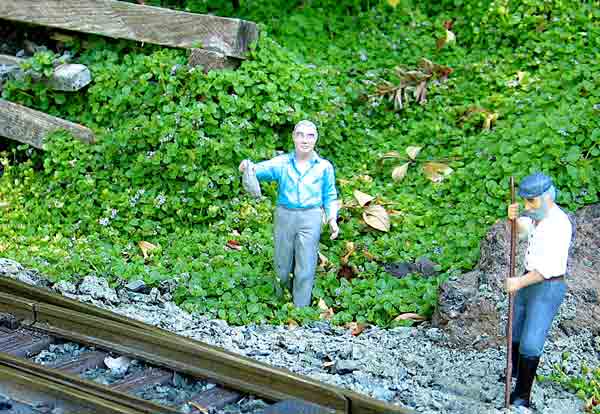
Common name: Corsican mint Plant type: Groundcover Latin name: Mentha requienii Plant size: ¼” to ½” high; spreading USDA Hardiness Zones: 6-9; annual in other zones Cultural needs: Moist, well drained neutral or slightly acidic soil; sun to part shade Easily one of the flattest groundcovers, with the tiniest purple flowers, Corsican mint is great […]
Read More…
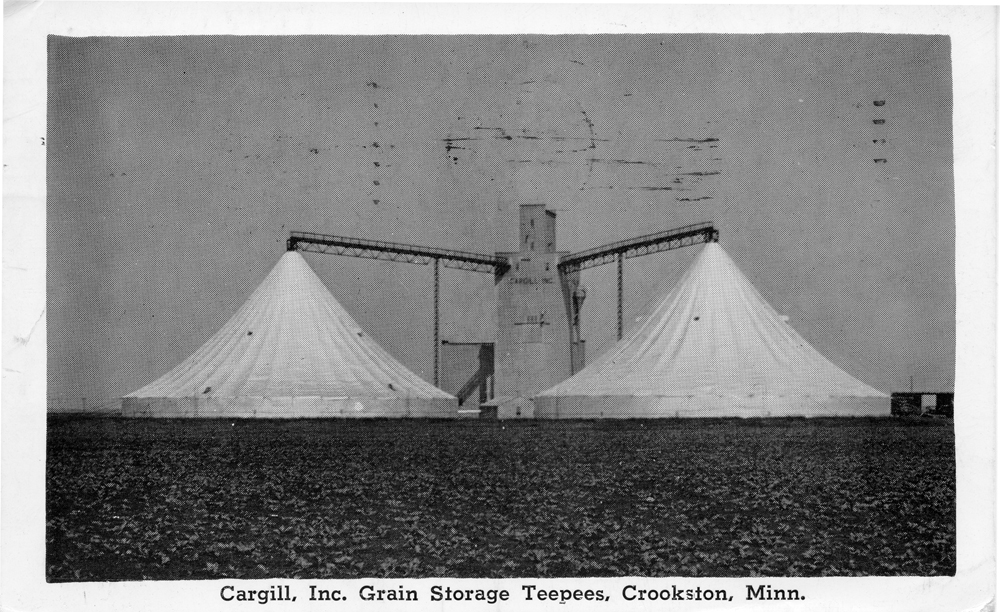
Welcome to the final installment in our three-part series “Modeling from postcards.” This time, we’ll take a look at cards that show two of Crookston’s rail-served industries. Welcome to Wilds. In 1964, Cargill Inc. built a grain elevator at the south end of Crookston near the station sign Wilds. In addition to the main elevator, […]
Read More…

Although Lionel has come out with a multitude of fantastic products over the years, one of the most amazing and important accessories that the popular manufacturer ever created was by far the Automatic Gateman. The Automatic Gateman is a structure that features a gateman emerging from his trackside shed to warn motorists of passing trains. […]
Read More…

When it comes to buying used track, should you or shouldn’t you? While buying new track means a more pristine look, it also means more money. However, if you have the time, a more cost-efficient method is buying used track, since you can always clean it up to look like new. It only takes a […]
Read More…
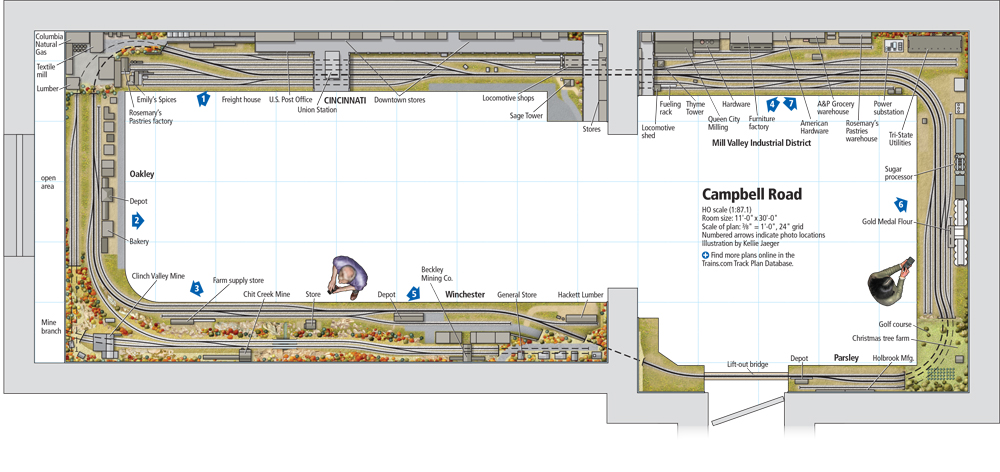
The layout at a glance Name: Campbell Road Scale: HO (1:87.1) Size: 11 x 30 feet Prototype: freelanced, Norfolk & Western, and Louisville & Nashville Locale: Cincinnati, Ohio, to Appalachia Era: autumn 1942-1945 Style: around-the-walls Mainline run: 82 feet Minimum radius: 22″ (main), 18″ (sidings) Minimum turnout: no. 4 Maximum grade: 2.5 percent Benchwork: open […]
Read More…
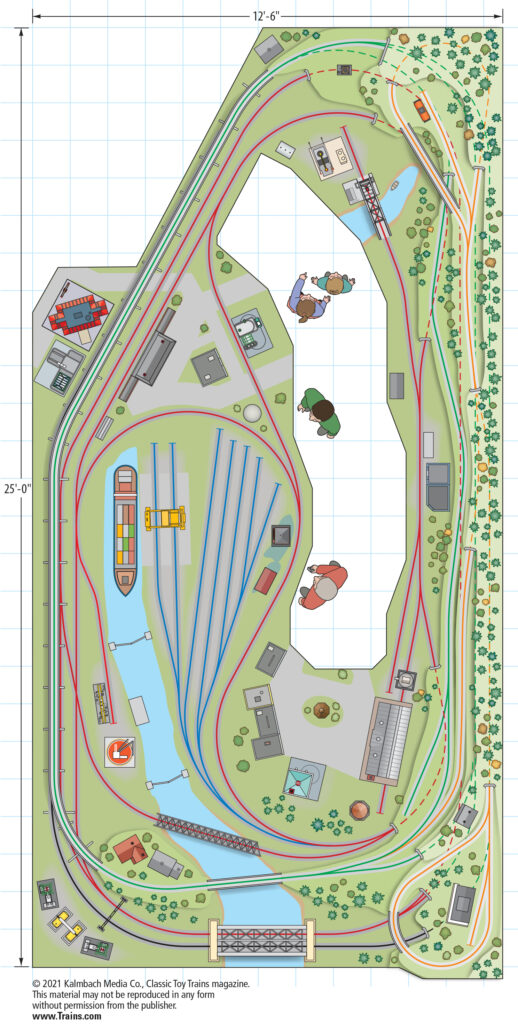
Facts & features Name: John Staschak’s O gauge layout Dimensions: 12½ x 25 feet Track: GarGraves, Ross Custom Switches (diameters range from 31 to 96 inches) Switches: GarGraves with Tortoise and Z-Stuff for Trains machines Motive power: Atlas O, Lionel, MTH, 3rd Rail, Weaver Rolling stock: Atlas O, K-Line, Lionel, Model Crafters, MTH, Ralph’s Trains, […]
Read More…
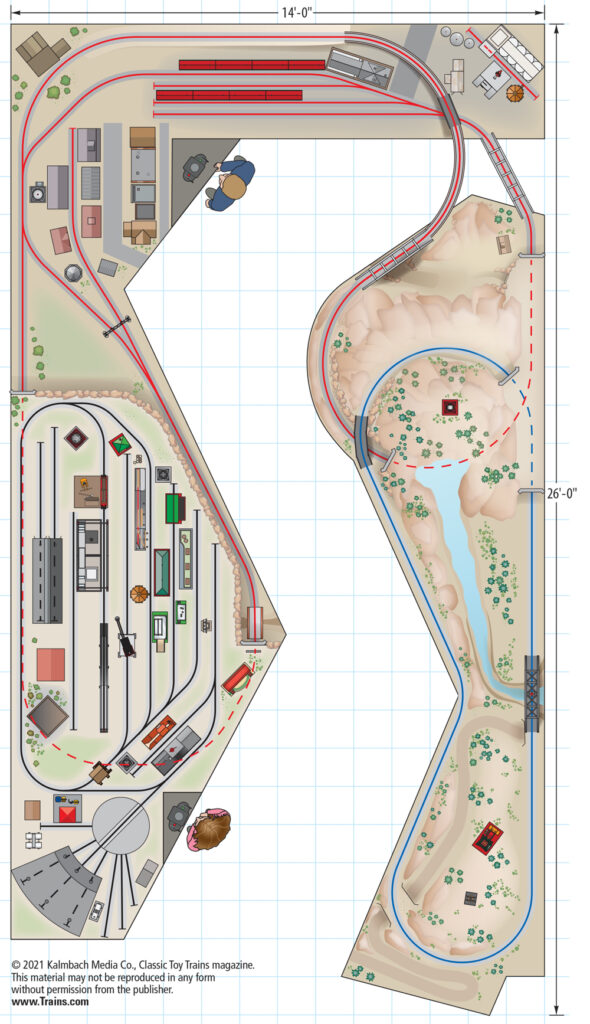
Facts & features Name: Ken Cook’s O gauge “Casey” Line Dimensions: 14 x 26 feet Track and switches: Lionel FasTrack, tubular (diameters range from 27 to 72 inches) Motive power: Lionel (postwar) Rolling stock: Ambroid, Lionel (postwar), Scale-Craft Models, Zimmer Controls: Lionel type-ZW transformers (2) Accessories: Lionel (prewar, postwar), Marx, Ross Custom Switches Structures: Downtown […]
Read More…

When it comes to figures, it seems most modelers fall into one of two camps. Some use only figures in static poses, like sitting or standing. The others enjoy making active scenes, like busy station platforms or marching bands. I don’t remember putting very many figures on my previous layout [featured in Great Model Railroads […]
Read More…

Thrift stores can hold a wealth of treasures for hobbyists, if you know where to look. I have suggestions of which departments to look for items for your garden railroad. I suggest going into a store with an open mind. For just a few dollars and a little paint, you might find something spectacular for […]
Read More…
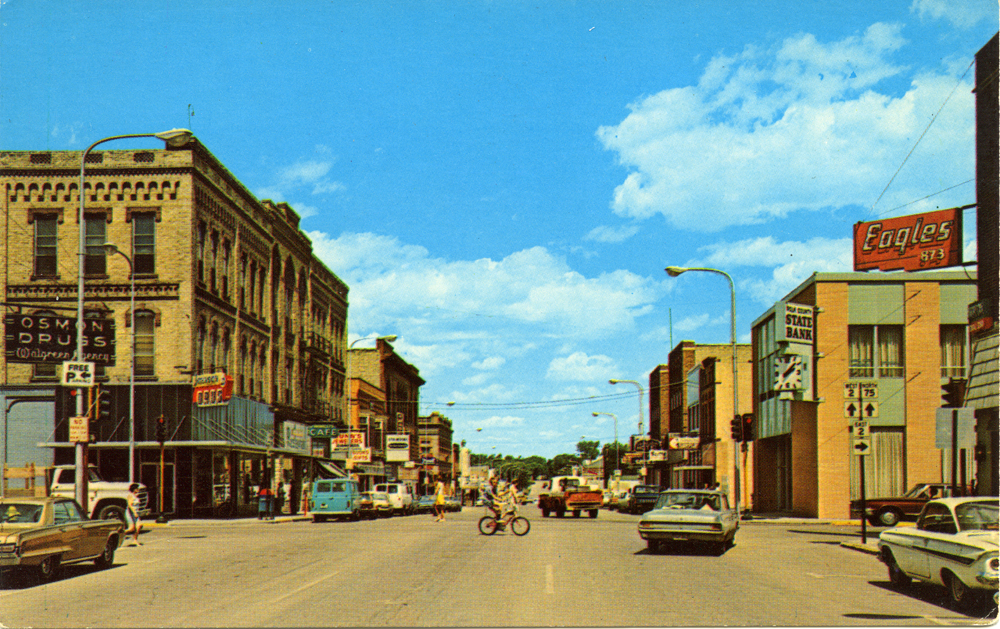
In last month’s installment, we took a look at two postcards that showed aerial views of Crookston, Minn., my hometown. This time we’ll examine two ground-level scenes, one in the city and the other in the country. The heart of downtown. The intersection of Broadway (the north-south street the photographer is standing in) and Robert […]
Read More…

Staging yards are how we represent the rest of the world beyond the unavoidably finite portion modeled on our layouts. Trains that come and go from staging can be arriving from the next town down the line, the next division point, or the other side of the continent. Staging is invaluable to creating the illusion […]
Read More…
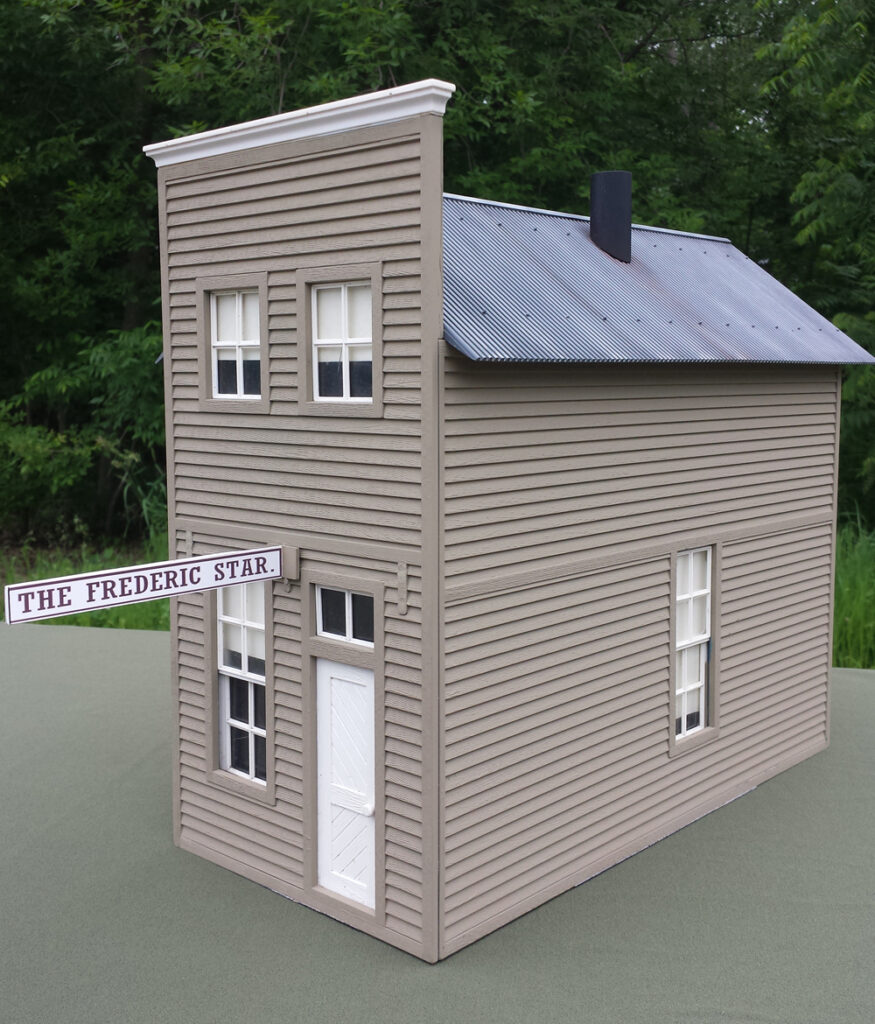
“Projecting” signs have been part of the commercial landscape for years. In the early years of the 20th century, they often consisted of boards jutting out from the front of buildings with the business name on both sides. They’re also referred to as “blade” or “flag-mounted” signs. I wanted to model projecting signs in my […]
Read More…












